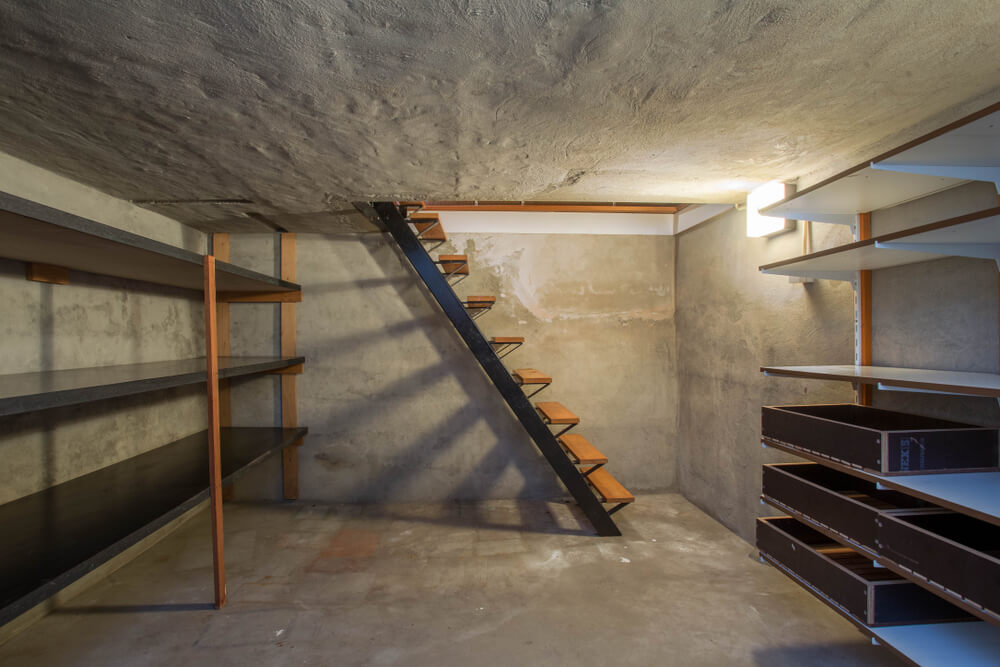Basements are generally quite dark, and when you add moisture to the mix, you have the perfect recipe for creating mold and mildew.
What’s worse is that moisture buildup can make its way into the structural supports of your home, which could cost you a ton of money to repair. For these reasons, it’s important to keep your basement dry.
Of course, a dehumidifier is one great way to keep your basement dry, but it can be expensive, hard to maneuver, and difficult to empty if there’s no drain. If you don’t prefer going down the dehumidifier route, then be sure to look at which dehumidifiers for crawl space we recommend. But, in this article, we will look at some cheaper alternatives to buying a dehumidifier, which will help you to keep your basement dry without spending a small fortune.
Why does a basement need to be kept dry?

Basements tend to be dark and damp, and because of that, it’s easy for mold and mildew to form. Mold and mildew are not only ugly to look at but can also lead to serious health problems, especially for people with respiratory conditions. In fact, mold produces toxic chemicals known as mycotoxins which can cause liver problems or sometimes even death.
Don’t panic, mold and mildew are not that likely to kill you, but the moisture in your basement could very easily seep into the structural supports of your home. You may not consider this to be a major problem – but think again.
When too much moisture builds up in the foundation of your home, it can cause premature deterioration and possibly even disrupt the settling of your home. These problems can cost thousands to repair – and that’s if you’re lucky and they can be repaired at all.
To prevent these sorts of problems from occurring, it’s important that you take action to prevent water from building up in your basement. One way to do that is by purchasing a dehumidifier for your basement, but this isn’t the only option – there are other, much cheaper alternatives that can do the trick just as well. Let’s go over a few of them now.
How to keep your basement dry without a dehumidifier
To be clear, these are not the only alternatives to a dehumidifier, but they are definitely the cheapest, most readily available solutions for keeping your basement dry. Best of all, some of these options even enhance your space visually as well, making it a win-win scenario.
1. Desiccants

Desiccants are substances that naturally keep your space dry by absorbing moisture from the air. Some examples of desiccants include silica gel beads, calcium chloride, activated alumina, certain types of clay, and a molecular sieve. Most of these products can be found at your local hardware store or ordered online for relatively low prices – especially when compared to the cost of buying a dehumidifier.
2. Plants

Plants are nature’s way of regulating moisture, as they absorb the moisture in the air and turn it into oxygen – which also serves multiple purposes. This means that they not only help to keep moisture in check, but adding plants to your space is also a great way to improve the air quality in your basement, and they can enhance the aesthetic of your space too. For all of these reasons, you should aim to place at least a few plants throughout your basement, ideally near a basement window or other source of light.
3. Ventilation

One of the major reasons why basements are often damp is that they don’t have adequate ventilation. By installing a vent fan, or even just opening a basement window, you can help much of the moisture escape. Additionally, you could install a basement ventilation system that is specifically designed to remove moisture, but this is probably unnecessary – and would likely cost as much as, if not more than, a dehumidifier. Consider window fans as one great option for basement ventilation.
4. Baking Soda

Believe it or not, baking soda is one of the best desiccants you can buy. Opening a couple of boxes of baking soda and placing them throughout your home can be one of the cheapest and most effective ways of removing moisture from your basement. You can often buy two or three boxes of baking soda for less than $10, and that should be more than enough to keep most basements dry throughout the year. Of course, if you have a very large home, then you may need a few more boxes, but generally speaking, baking soda is a great option to consider.
5. Charcoal

Another very good option is charcoal, specifically activated charcoal. Charcoal is another natural desiccant that can effectively absorb the moisture in your basement. You should be able to find a large bag of activated charcoal down at your local hardware store, and many grocery stores will also sell charcoal. In any event, it’s very inexpensive and can also remove odors from your basement, so this is an excellent option that you should consider.
Combining the best air purifiers for basements and best crawl space dehumidifer you can ensure that areas that are normally prone to damp and bad air quality can be fixed as long as you keep providing power and removing water.
6. A fan

Last but not least, a simple fan can work wonders when it comes to drying out your basement. Fans circulate the air – and when air circulates, it cools. Cool air is naturally drier than warm air, which tends to be humid, so by installing an oscillating or tower fan, you can ensure that your basement remains dry while at the same time enhancing your space and cooling it down. A basic fan should cost you less than $50, and even a very good fan shouldn’t cost more than $100. Compared with the cost of a dehumidifier, a good fan will be an inexpensive but great investment.







